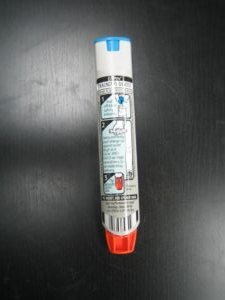The objective when managing a food allergy is to avoid consuming the food that causes problems. It is vital to carefully check the ingredients of food products and learn whether what should be avoided.
Food manufacturers of packaged foods are required to identify in clear language the presence of any of the common food allergens – egg, milk, soy, wheat, fish, peanut, tree nut and crustacean shellfish – in their products. The presence of these allergens should be stated even if it is only an additive or flavoring.
Avoiding a particular allergen is easier said than done. While labelling has helped, some foods are so common that avoidance can be a daunting task. Consulting a nutritionist can greatly help since tips can be provided on avoiding foods that trigger allergies as well as ensuring that the individual still acquires all the required nutrients.
It is important to note that allergies to eggs, milk, soy and wheat may disappear over time while allergies to tree nuts, peanuts, shellfish and fish tend to last for a lifetime.

Considerations when eating out
When eating out, you have to be careful. Remember that the waiters might not always know the ingredients of every dish offered on the menu. Depending on the sensitivity of the individual, even walking into a restaurant can trigger an allergic reaction.
The individual with an allergy must inform the servers about his/her allergies and ask to speak to the chef, if possible. Clarify with the staff regarding the dishes on the menu that are safe to eat.
What is anaphylaxis?
The symptoms triggered by a food allergy can range from mild to life-threatening. Take note that the severity of every reaction is unpredictable. Individuals who previously experienced mild symptoms can suddenly end up with a life-threatening reaction known as anaphylaxis which impairs breathing and causes an abrupt drop in the blood pressure. Always bear in mind that food allergy is the main cause of anaphylaxis outside the hospital setting.
The first line of treatment for anaphylaxis is epinephrine. Anaphylaxis can occur in just seconds or minutes of exposure to a particular allergen and can worsen quickly and can be deadly.
An individual diagnosed with a food allergy is usually prescribed an epinephrine auto-injector that must be readily on hand at all times. It should have two doses available since a severe reaction has the tendency to recur. Administer a shot right away if severe symptoms are present such as repetitive coughing, shortness of breath, hives, weak pulse, difficulty breathing, throat tightness or a combination of symptoms in different body parts. Call for emergency assistance after the shot has been given.
Food allergies in children
Parents who have a child with food allergy must ensure that the school has a written emergency action plan. This plan must provide instructions on preventing, recognizing and managing food allergies.
